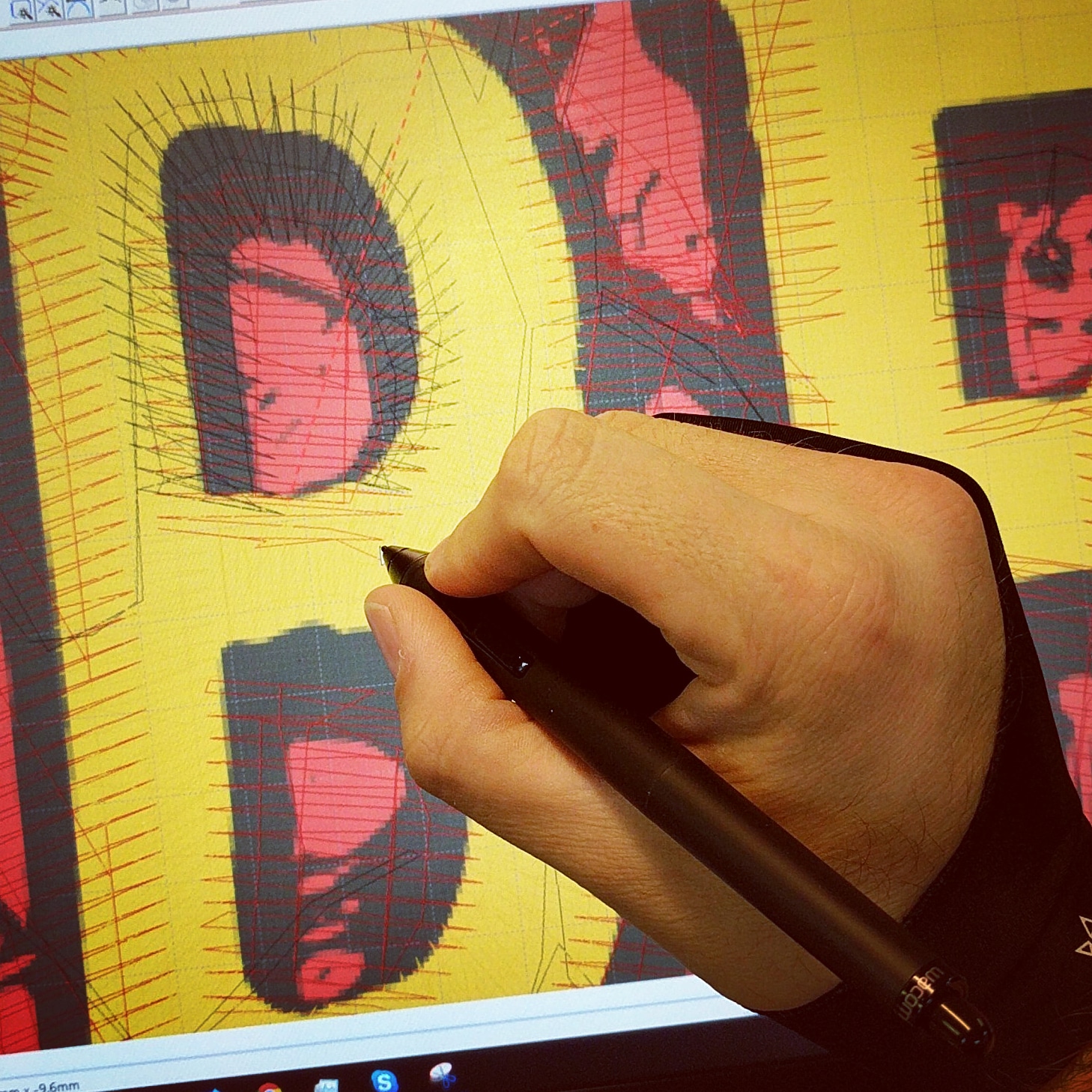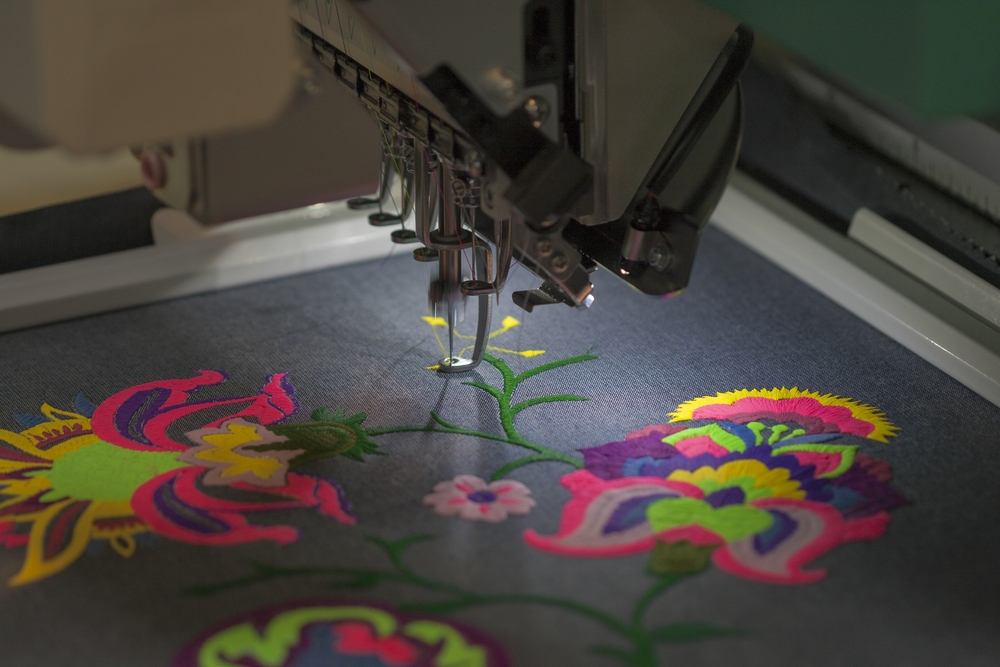Professional Digitizing for Embroidery: High-Quality Designs
Professional Digitizing for Embroidery: High-Quality Designs
Blog Article
Mastering the Embroidery Digitizing Refine: Your Ultimate Overview
Embroidery digitizing is a careful craft that calls for precision and experience to translate complex layouts right into digital styles for maker needlework. As craftsmens embark on this journey to grasp the needlework digitizing procedure, an extensive understanding of the fundamentals sets the foundation for quality. However, beyond the fundamental expertise lies a realm of sophisticated software application, specialized devices, and nuanced strategies waiting to be discovered. By diving right into the subtleties of digitizing, one can open a globe of innovative possibilities and raise their needlework jobs to new heights.

Comprehending Embroidery Digitizing Fundamentals
Embroidery digitizing fundamentals develop the foundation upon which elaborate styles are equated into machine-readable styles for accurate stitching. This first step in the embroidery digitizing procedure is critical for ensuring that the last stitched item is a devoted representation of the original design. Recognizing needlework digitizing basics involves understanding key concepts such as stitch kinds, stitch direction, thickness, padding, and pull compensation.
Sew kinds play an important role in establishing the aesthetic and textural result of the embroidered design. By picking the proper stitch type, whether it be satin, fill, or running stitch, digitizers can achieve the wanted impact and enhance the total high quality of the embroidery. Additionally, sew direction affects the circulation and dimension of the layout, while density determines the spacing and insurance coverage of the stitches.
Moreover, underlay sewing offers security to the style by securing the textile and avoiding distortion during the embroidery process. Pull compensation is another crucial factor to consider to combat the all-natural tendency of material to contract when sewn. Understanding these embroidery digitizing essentials is basic for developing professional-quality stitched products.
Picking the Right Digitizing Software
Choosing the appropriate digitizing software application is a crucial decision that considerably impacts the performance and quality of the needlework digitizing procedure. Digitizing for Embroidery. When choosing the right digitizing software application, it is necessary to take into consideration elements such as the intricacy of styles you prepare to develop, the user-friendliness of the software, the level of client support supplied, and the compatibility with your needlework machine
There are various digitizing software application alternatives available in the market, varying from fundamental programs for newbies to advanced software application for specialist digitizers. Some preferred choices include Wilcom EmbroideryStudio, Hatch Needlework Software Program, and PulseID. These software offer a variety of tools and functions to assist you develop complex designs easily.
Prior to making a decision, it is recommended to check out the different software application choices with totally free trials or trials to establish which one best suits your requirements. In addition, reading testimonials and seeking referrals from seasoned digitizers can supply beneficial understandings into the toughness and weak points of each software (Digitizing for Embroidery). By meticulously evaluating your requirements and contrasting the read functions of various digitizing software, you can make an educated option that enhances your embroidery digitizing workflow
Digitizing Tools and Methods

Optimizing Style Settings for Embroidery
Mastering the intricacies of layout setups is basic in achieving ideal cause the needlework digitizing process, building upon the foundation laid by understanding digitizing devices and strategies. When optimizing layout setups for embroidery, it is necessary to think about aspects such as stitch type, density, padding, draw payment, and registration. Sew kind choice impacts the total look of the style, with options like satin, fill, and running stitches offering various structures and effects. Thickness describes the spacing and thickness of stitches, influencing the style's protection and resilience. Correct rug stitching gives security and avoids fabric distortion, specifically for complicated designs or on elastic materials. Draw payment adjusts for material stretch during sewing, guaranteeing accurate layout replication. Enrollment settings align various components of the design properly, preserving overall style integrity. By fine-tuning these style setups, embroiderers can improve the quality and accuracy of their embroidered developments.

Troubleshooting Common Digitizing Issues
When experiencing common digitizing concerns throughout the embroidery procedure, it is important to recognize the source and apply effective options promptly. One usual problem is stitch density concerns, where stitches might be too dense, triggering the textile to pucker, or also sparse, causing click to find out more voids in the design. Changing the stitch thickness settings in the digitizing software application can assist resolve this issue.
One more constant challenge is thread breaks during the needlework procedure. This can take place because of various reasons such as inaccurate stress setups, plain needles, or using low-quality thread. Guaranteeing correct upkeep of the needlework machine, including regular needle changes and tension modifications, can decrease the event of string breaks.
Furthermore, layout enrollment mistakes can result in misaligned aspects within the embroidery style. Examining the style positioning in the digitizing software program and making necessary adjustments prior to stitching can assist in avoiding this problem. By addressing these usual digitizing issues immediately and effectively, you can make sure a smoother embroidery process and high-quality completed items.
Final Thought
Finally, understanding the embroidery digitizing process needs click here to read a solid understanding of the essentials, the ideal choice of software application, and expertise of tools and methods. Optimizing layout setups and troubleshooting common digitizing concerns are essential steps in making certain high-quality embroidery outcomes. By complying with these actions carefully, one can attain precision and effectiveness in the digitizing process.
Report this page